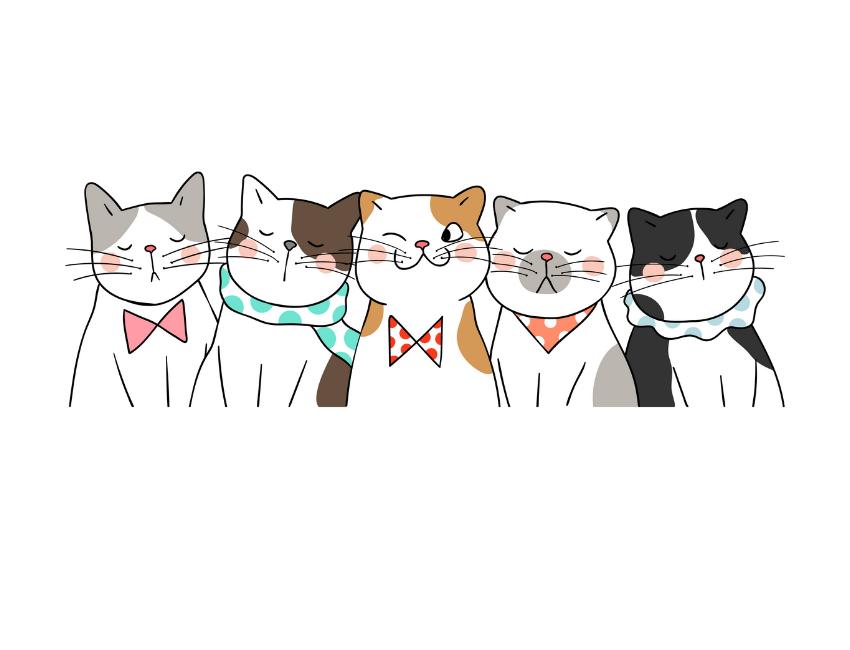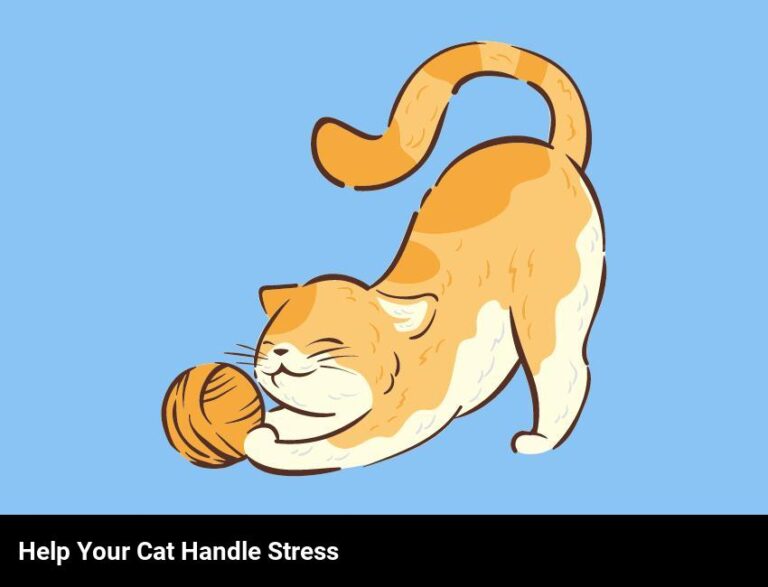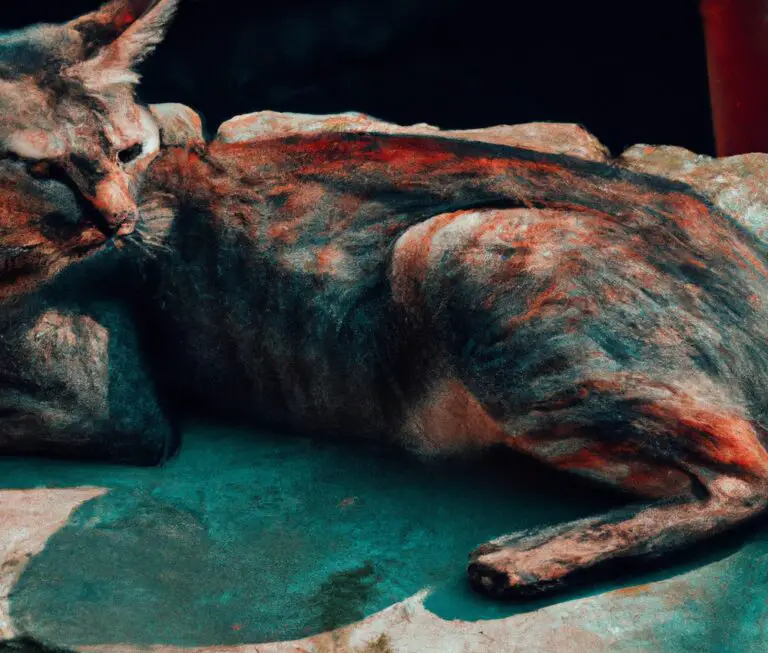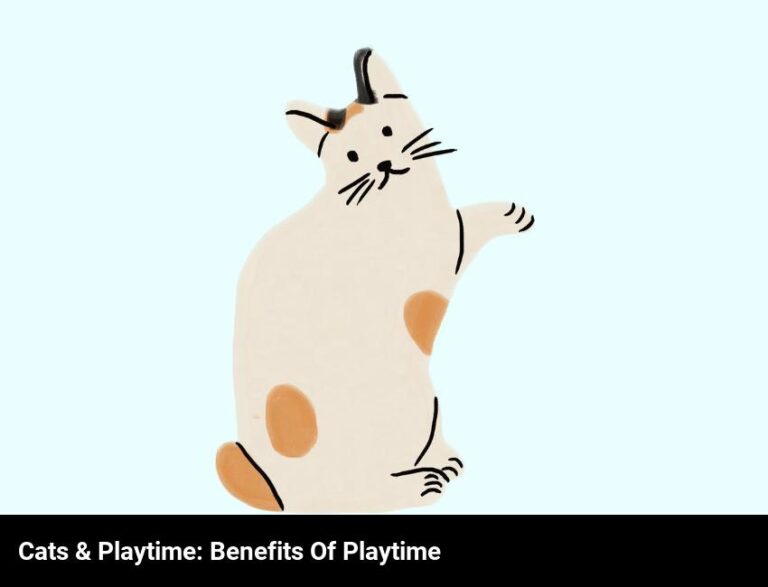The Secret Lives Of House Cats
Cats are independent animals, so their secret lives can be hard to know. However, it is known that cats can sleep up to 16 hours a day and enjoy playing with toys, exploring outside, and cuddling with their owners.
As a lifelong pet-lover, I’ve always been fascinated by the secret lives of house cats. From their playful antics to their mysterious, independent nature, cats never cease to amaze me. But what is it that really makes cats tick? What are the most common behaviors of house cats? How do cats express their emotions and needs? And what triggers their instinctual behavior?
In this blog, I’ll explore the answers to these and other questions. From understanding the environment cats need to feel safe and content to recognizing the signs that show when a cat is feeling anxious, lonely, or playful, I’ll share my personal experiences with cats and provide tips and advice on how to ensure your furry friend lives a long and happy life.
What are the most common behaviors of house cats?
Do you ever wonder what your house cat gets up to when you aren’t home? You might be surprised to learn that cats have a secret life filled with fascinating behaviors. So, what are the most common behaviors of house cats?
Well, one of the most common behaviors is snoozing. Cats can easily sleep up to 16 hours a day and they often find cozy spots to snooze away the day. They love to lie in the sun, curl up in boxes, or snuggle into warm blankets.
Cats also like to keep busy by playing. Whether it’s chasing a ball of yarn, pouncing on toy mice, or swatting at a dangling feather, cats love to find ways to entertain themselves. This is their way of staying active and having fun.
Cats also love to explore. Your cat might show interest in anything from a rustling plastic bag to a scurrying bug. Whether it’s investigating a new item in the house or exploring the backyard, cats enjoy discovering new things.
Finally, cats also love to groom themselves. Cats can spend hours a day cleaning themselves, licking their fur, and cleaning their paws. This is an important part of their daily routine and helps them stay healthy and look their best.
So, there you have it — the most common behaviors of house cats. From snoozing to playing and exploring to grooming, cats are always up to something interesting.
How do cats express their emotions?
Have you ever wondered how cats express their emotions? Cats are known for being mysterious, but they have a variety of ways of expressing their feelings.
- Cats can use body language to show how they feel. If they’re happy or content, they might arch their backs, rub against you, or purr. If they’re agitated or uncomfortable, they’ll likely flatten their ears, tuck their tails, and move away from you.
- Cats also make different vocalizations to communicate. Purring is often a sign that they’re feeling content and relaxed, while meowing can be used to make a request or show excitement. Hissing is usually a sign of aggression or fear.
- Cats also communicate through scent. When cats rub against objects, they’re leaving behind pheromones that convey information about their emotional state.
- Cats can also use facial expressions to show their emotions. For example, widening their eyes may indicate fear or surprise, while narrowing them may be a sign of aggression.
Overall, cats have a range of ways that they can express their emotions. Paying close attention to your cat’s body language, vocalizations, and facial expressions can help you better understand their feelings.
What triggers cats’ instinctual behavior?
Have you ever wondered what goes on inside your cat’s head? The secret lives of house cats are fascinating and complex. They’re independent animals with natural instincts about when to hunt, sleep and play. So, what triggers cats’ instinctual behavior?
Many of a cat’s natural behaviors are instinctive, meaning they’re hard-wired into their brains and they don’t need to learn them. For example, cats are natural hunters. They have a strong drive to stalk their prey and will play with their catch before consuming it. Cats are also nocturnal animals, meaning they’re most active at night. If you observe your cat closely, you’ll likely see them prowling around the house and on the lookout for prey in the evening.
Cats also have a certain fascination with heights. This helps them to better hunt and escape from predators. When your cat is perched up high on their scratching post or perched atop the refrigerator, they’re using its natural instinct to stay safe and gain an advantage over potential prey.
Cats also tend to be territorial animals, which is why they mark their territory with scent. They may rub against furniture and walls, and scratch or bite items to leave their scent. This helps other cats to recognize their territory and stay away.
Finally, cats are instinctively inclined to groom themselves. Grooming helps keep their fur clean and also is a way for cats to express their feelings. When cats groom themselves, it can be a sign of contentment and relaxation.
These are just a few of the triggers of cats’ instinctual behavior. Understanding your cat’s natural behavior can help you better understand and care for them. By observing your cat closely, you can gain insight into their secret lives.
How can you tell when your cat is feeling stressed?
Have you ever noticed your cat acting a bit differently after a loud noise or a strange visitor? Cats are very sensitive creatures and can easily become stressed in unfamiliar situations. But how can you tell when your cat is feeling stressed?
One tell-tale sign of stress in cats is a change in behavior or attitude. If your cat normally loves to cuddle and suddenly becomes aloof or starts hiding away, it could be a sign that they are feeling overwhelmed. Similarly, if your cat is usually active and playful but starts ignoring their favorite toys, it may be a sign that something is off.
You can also look out for physical signs of stress in cats. Signs such as excessive grooming, increased shedding, dilated pupils, increased heart rate, and rapid breathing can all indicate that your cat is feeling overloaded. If you notice any of these signs in your cat, it is best to act quickly and try to reduce their stress levels.
Finally, cats also have a range of vocalizations that can be used to tell when they are feeling stressed. From hissing to meowing to growling, cats express their feelings in a variety of ways. If your cat is making louder or more frequent vocalizations than usual, it may be a sign that they are feeling anxious or overwhelmed.
Overall, cats are experts at hiding their emotions, but with a bit of observation, you can tell when your cat is feeling stressed. By paying attention to their behavior, physical signs, and vocalizations, you can help make sure your cat feels as safe and comfortable as possible.
What kind of environment do cats need to feel safe and content?
When it comes to feeling safe and content, cats need an environment that is tailored to their specific needs. This can include an abundance of places to hide and seek protection, plenty of comfortable napping spots, and lots of areas that provide stimulation and entertainment.
To make sure your feline friend feels content and secure, it’s important to give them a variety of hiding places. Cats love to perch in high places, so make sure to get them a cat tree or shelves that they can jump and climb on. You can even create hiding places out of cardboard boxes, paper bags, and laundry baskets.
Another element of a cat’s environment that makes them feel content and safe is having plenty of comfortable napping spots. Cats love to curl up in cozy places, like their favorite chair, a blanket, or a sunny windowsill. Make sure to provide your furry friend with plenty of soft pillows and blankets so they can snuggle up and take a nap whenever they want.
Finally, cats need stimulation to stay content and secure. This can include interactive toys, scratching posts, and plenty of places to explore and play. You can also give your cat a view of the outdoors so they can watch birds, squirrels, and other interesting animals. This will provide your cat with lots of mental stimulation and help them stay content in their home.
Creating a safe and content environment for your cat doesn’t have to be difficult. With a little bit of effort, you can make sure your furry friend feels secure and content in their home.
How can you tell if a cat is feeling playful?
You can tell if a cat is feeling playful by observing its body language. Watch for signs like the tail twitching, ears pricked up, and eyes wide and bright. Your cat may also start to meow more than usual, or it may start running around and jumping on furniture. If your cat starts to paw at objects or chase its own tail, that usually indicates that it’s feeling playful.
Another sure sign of a playful cat is when it brings you its favorite toys. If your cat starts bringing its toys to you, or batting them around on the floor, it’s most likely in the mood for a game.
You may also notice your cat rubbing up against your legs or furniture. This is a sign that they are feeling sociable and looking for attention. When cats rub against people or objects, it’s their way of leaving their scent and claiming ownership. If your cat is rubbing against you, it likely wants to play.
Finally, cats usually become more vocal when they want to play. If your cat is meowing, chirping, or trilling, it’s definitely in the mood for some fun.
Overall, you can tell that a cat is feeling playful by looking for signs in its body language, such as a twitching tail, pricked ears, and wide eyes. If your cat starts meowing or bringing its toys to you, it’s a sure sign that it’s feeling playful. So, keep your eyes and ears open, and you’ll be able to tell when your cat is ready to play.
How can you tell if a cat is feeling anxious or fearful?
When it comes to understanding the secret lives of house cats, one of the most important things to understand is how to tell if a cat is feeling anxious or fearful. Fortunately, cats have several visual and auditory cues that can help us to identify their emotions.
If a cat is feeling anxious or fearful, they will often have their ears laid flat against their head and their tail tucked between their legs. This is a defensive posture that cats take when they feel threatened and is a sure sign that they are feeling anxious or fearful. Additionally, you may notice them exhibiting behaviors such as excessive meowing and hissing, dilated pupils, and a reluctance to move or interact with humans or other cats.
In some cases, cats may also exhibit self-soothing behaviors such as licking themselves or their paws. This is an attempt to comfort themselves and is another sign that they are feeling anxious or fearful. It is important to pay attention to these signs and provide reassurance to your cat if needed.
The best way to tell if a cat is feeling anxious or fearful is to observe their body language and behavior. If you notice any signs of anxiety or fear, it is important to provide reassurance and comfort to your cat. With patience and understanding, you can help your cat to feel more comfortable and relaxed.
What are the signs that show a cat is feeling lonely or bored?
You can tell when your cat isn’t feeling quite right and one of the most common issues is loneliness or boredom. Cats, just like people, need companionship and stimulation. If your cat is feeling alone or uninterested in its surroundings, there are some signs that you can look out for.
One of the most common signs of loneliness or boredom in cats is a decrease in activity. If your cat is spending more time sleeping and less time running, chasing, or playing, it could be a sign that they’re feeling lonely or bored. Cats also tend to meow more when they’re feeling lonely, so if you notice your cat meowing more than usual, they may be trying to tell you something.
Another sign is that your cat will start seeking attention more frequently. If your cat is constantly following you around the house, weaving between your legs, or just generally trying to stay close to you, chances are they need more companionship. Your cat might also start to act out, such as scratching furniture or jumping on counters, if they feel lonely or lack stimulation.
Finally, watch for changes in your cat’s eating habits. If your cat suddenly stops eating or skips meals, it could be a sign that your cat is feeling lonely or bored. Cats need to feel safe and secure in their environment in order to eat properly, so if things have changed recently, it could be causing an issue.
Overall, if you think that your cat is feeling lonely or bored, there are some signs that you can look out for. If you notice any of these signs, it might be time to provide your cat with some extra attention, companionship, and stimulation.

Frequently Asked Questions
What unique behaviors can cats display when they are left alone at home?
When cats are left alone in the house, they can display some unique behaviors. Some cats may start to meow more, while others will become more active and explore their environment. Some cats may become withdrawn and hide in quiet places. Other cats may start to act aggressively and mark their territory around the house. Many cats also enjoy playing with their toys and can become quite creative in finding ways to entertain themselves.
What are some creative ways that owners can keep their cats entertained?
Owners can keep their cats entertained in creative ways. Some examples include getting interactive toys, setting up a cat tree to explore, providing scratching posts for sharpening claws, and setting up an outdoor enclosure for them to safely explore. A good way to keep cats entertained is to create a stimulating environment in the house, such as setting up a designated play area, offering a variety of toys, and rotating them out to keep things interesting. Additionally, owners can also provide catnip or play games with their cats to keep them occupied and engaged.
How can owners tell if their cats are feeling insecure or overwhelmed?
Owners can tell if their cats are feeling insecure or overwhelmed by looking for signs of stress such as hiding, excessive grooming, or meowing. Changes in behavior like decreased appetite, avoidance of people or other pets, and increased aggression are also good indicators of stress. Paying attention to your cat’s body language and vocalizations can help you identify any signs of insecurity or overwhelm.







